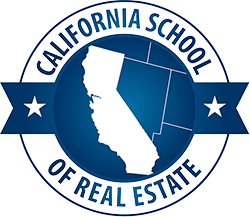The purpose of this sample program is to give you an insight into the subject matter and vocabulary that you will be tested-on when taking your actual state exam along with the study process you will be following as you go through our study program. This is not a sample of the Qualification Course material or its study process, which is somewhat different than studying for the actual state exam, as the purpose of those courses are to simply get your certificates of completions so you can qualify for a state exam testing date. This is a sample of License Preparation Program…Our 178-page Exam Review Guide which is used to follow along with the DVD and is the focused subject matter and vocabulary you will be tested on for the state exam.
To start, simply read the information provided in AREA I through AREA VII and then complete the sample test. When you have finished the test you may find that you have missed some of the answers to the questions. If so, this would most likely be due to you only having the opportunity to read the material one time. This the very reason why we have developed a study program that gives you all the necessary components of the program such as our Exam Review Guide, DVD, and the Lightning Review CDs. By reading and listening to these over and over, they will provide you with the repetition that we have found to be absolutely crucial in order to properly understand and memorize this large scope of subject matter
Below you will see exactly how simple and easy the process actually is. In result you will not waste your time studying a massive amount of information you don’t need and therefore have a greater chance of passing your state exam on the first try!
Good Luck,
.
I. PROPERTY OWNERSHIP
LAND (Boundaries)
- Surface: The area on the surface of the Earth.
- Material beneath the surface: Extends to the center of the Earth. Reasonable rights to surface entry implied unless entry is expressly limited to a footage below the surface.
- Airspace: Infinite height. Due to modern changes it is subject to air travel and may be used only to a “Reasonable And Enjoyable Height”
II. ENCUMBRANCES
HOMESTEADING – DECLARATION OF HOMESTEAD
(Not an encumbrance – Provides protection against the forced sale of a residence)
Purpose: A California Law that allows an owner to protect their home from foreclosure sale resulting from unsecured judgment liens up to specified limited sums.
Eligible Property (Only one residence can be homesteaded at a time)
Will Terminate a Homestead
- Sale of property (Title transferred to another).
- Filing a “Declaration Of Abandonment of Homestead”.
Will Not Terminate a Homestead
- Improvements partially or totally destroyed by fire.
- Moving from the premises
e.g. – Property not sold, but leased to another .
III. REAL ESTATE LAW
THE DEPARTMENT OF REAL ESTATE
An agency of the Department of Consumer Affairs
Purpose: To enforce California Real Estate Laws .
Maintains Real Estate Accounts For Education, Research and Recovery.
The Department of Real Estate is a self supporting agency, supported by collected fees . Of fees collected, a portion is required to be placed into two separate accounts:
- Education & Research Fund
Earmarks funds for real estate Education and Research. - Recovery Fund
Underwrites payment of uncollectable judgments
against insolvent licensees for amounts limited to:
a. $50,000 per each individual claim
b.$250,000 maximum (total claims) per licensee
IV. LAWS OF AGENCY
CREATING A VALID CONTRACT
Four Essential Elements Required
- Parties Capable Of Contracting
- Mutual Consent
- Lawful Object
- Sufficient Consideration
V. VALUATION AND MARKET ANALYSIS
FOUR ELEMENTS THAT INFLUENCE VALUE
(Value and Worth have the same meaning)
- UTILITY (Most Important)
To have value, an item must have a use. The use to which an item is put which produces the “Greatest Net Return ” is known as it’s Highest and Best Use . - SCARCITY
A shortage of available supply compared to demand for item. - DEMAND
The desire to possess. In order to be effective it must be backed by Purchasing Power . - TRANSFERABILITY (Critical to value, but least important of the four)
The condition and capability of the title to be conveyed.
NOTE: Cost is not an element of value. Cost represents what was paid for an item.
Example: Buyer paid $100,000 (Cost) in 2001 and just recently resold for $250,000 (Value).
VI. FINANCING
TWO TYPES OF LENDERS – Institutional vs. Non-Institutional
Institutional
Commercial Banks (State or Nationally chartered)
Savings and Loan Associations (State or Federally chartered)
Life Insurance Companies
Mutual Savings Banks (Located Predominantly in Northeastern U.S.)
Credit Unions
Non-Institutional
Thrift Companies
Endowed Universities
Private Investors (Individuals or groups. e.g. – sellers, brokers)
Pension Funds
Mortgage Companies – Only considered lenders if they loan money directly to the borrower.
VII. PERSONAL PROPERTY
That property which is not real property.
A. Personal property can be Tangible or Intangible
- Tangible: Items that may be physically possessed.
- Intangible: Items having no physical substance.
e.g. – Rights given by contract, labor, etc.

